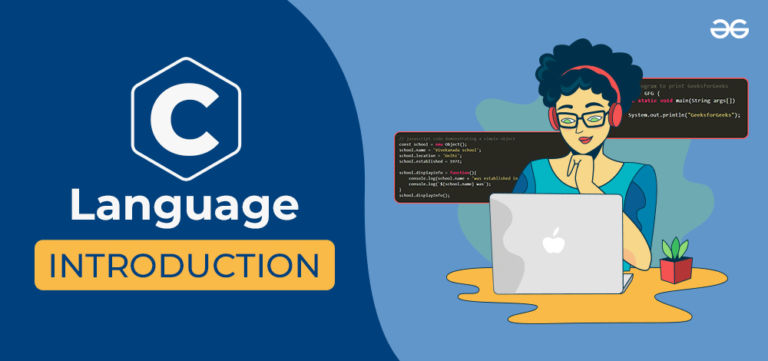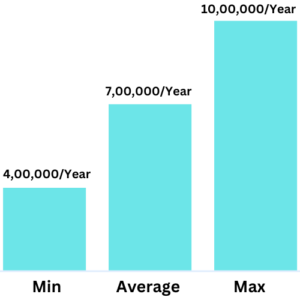Join the course soon ,get certified and Take hold of this opportunity to enhance your technical skills and get placed in your dream job.
Networking Certification Courses
Why Networking ?
For those who work in technological fields, networking on computers is a crucial ability. A solid grasp of computer networking might help you exhibit expertise that strengthens your application for some jobs. Networking knowledge is essential for those who work as network supervisors, network technicians, and network technicians. Networking supervisor, technician, and engineer are just a few of the occupations available in computer networking. Consider yourself enrolling in our institute’s best Networking course available in Pondicherry. Other titles of employment like systems manager or computers architect might be considered computer networking. The industry is expanding as a result of many causes, including the growing need for commercial firms to go fully digital and increasing options for cloud-based computing. If you are starting out to be well versed in your profession, it is the ideal choice to enroll yourself in our institute in Pondicherry to access the best Networking course and embark a journey towards a dynamic profession over the horizons.
- Upcomig batch Starting on 26 th December 2023

4.8
Google Review

100%
Satisfaction

Unlimted
Access to learn

Track
Your career growth
Networking Course Curriculum
Curriculum Designed by Our Experts Designed by Our Developers
-
Download Curriculum
Topics
Module 1 – Network Fundamentals
- Introduction To Networks
- Network Protocols
- Network Access
- Ethernet
- Network Layer
- Transport Layer
- Cisco IOS
- IP Addressing
- White Board Practice : Subnetting
- Application Layer
- Ideal Network
- Network Topology Architectures
- Lab : Basic Router Configuration
- Lab : IPv6 Interface Configuration
Module 2- Routing And Switching Essentials
- Switched Networks Overview
- VLAN
- Routing Basics
- Inter VLAN Routing
- Dynamic Routing
- Access Control Lists
- DHCP
- NAT
- Device Discovery & Management & Maintenance
- CDP and LLDP
- NTP
- Password Recovery Process
- Lab : Basic Switch Configuration
- Lab : Basic Switch Port Configuration
- Lab : Access Control Lists Configuration
- Lab : Static Routing Configuration
- Lab : Inter VLAN Routing Configuration
Module 3- Scaling Networks
- Scaling Networks Overview
- LAN Redundancy
- First Hop Redundancy Protocols – HSRP
- First Hop Redundancy Protocols – VRRP
- First Hop Redundancy Protocols – GLBP
- Link Aggregation
- Wireless LAN
- Cisco Wireless Architecture
- OSPF Basics & Single Area OSPF Configuration
- Multi Area OSPF
- EIGRP Overview & Basic Configuration
- Advanced EIGRP Configuration & Troubleshooting
- IOS Images & Licensing
- Lab : VTP Configuration
- Lab : Spanning-Tree Configuration
- Lab : HSRP Configuration
- Lab : Etherchannel Configuration
- Lab : Single Area OSPF Configuration
- Lab : OSPFv3 Configuration
- Lab : EIGRP Configuration
Module 4- Connecting Networks
- Wide Area Network
- Point-To-Point
- Broadband
- eBGP
- Lab : eBGP Configuration
- Site-To-Site Connectivity Security
- Network Monitoring
- Troubleshooting
- Quality Of Services
- Cloud & Network Programming
Module 5- Security Fundamentals
- Key Security Concepts
- Password Policies Elements and Password Alternatives
- Next Generation Firewall and IPS
- Wireless Security Protocols
Module 6- Network Automation and Programmability
- Why Do We Need Network Automation ?
- Traditional Networks vs Controller Based Networks
- Control Plane and Data Plane
- Network Controllers (Cisco DNA and Wireless Controllers)
- Cisco Software Defined Access
- Northbound and Southbound APIs
- REST APIs
- Configuration Management Mechanisms (Ansible , Chef and Puppet)
- Interpret JSON Encoded Data

Free Career Counselling
We are happy to help you 24/7
Topics
C is a general-purpose programming language created by Dennis Ritchie at the Bell Laboratories in 1972. It is a very popular language, despite being old. The main reason for its popularity is because it is a fundamental language in the field of computer science.
Introduction to C
- C is a general-purpose, procedural, high-level programming language used in the development of computer software and applications, system programming, games, web development, and more.
- The C language was developed by Dennis M. Ritchie at the Bell Telephone Laboratories in 1972.
- C is one of the most widely used programming language.
- C programming language is known for its simplicity and efficiency.
- It is the best choice to start with programming as it gives you a foundational understanding of programming.

Why we learn c?
The main features of C language include
- low-level access to memory,
- simple set of keywords, and clean style,
- Perfomances
these features make C language suitable for system programming like operating system or compiler development.
Learning C programming has lot of benefits, but the foremost thing in which it helps is to understand the underlying architecture of how things works?
As learning C help to understand a lot of underlying architecture of operating system. Like, pointers, working with memory locations etc.
variables

- Variable is basically nothing but the name of a memory location that we use for storing data.
- We can change the value of a variable in C or any other language, and we can also reuse it multiple times.
- We use symbols in variables for representing the memory location- so that it becomes easily identifiable by any user.
- To indicate the storage area, each variable should be given a unique name (identifier).
- Variable names are just the symbolic representation of a memory location.
Syntax
Type variableName = value;
int playerScore = 95;
Here, playerScore is a variable of int type. Here, the variable is assigned an integer value 95.
Rules for naming a variable
- A variable name can only have letters (both uppercase and lowercase letters), digits and underscore.
- The first letter of a variable should be either a letter or an underscore.
- There is no rule on how long a variable name (identifier) can be. However, you may run into problems in some compilers if the variable name is longer than 31 characters.
Note: You should always try to give meaningful names to variables. For example: firstName is a better variable name than fn.
C is a strongly typed language. This means that the variable type cannot be changed once it is declared. For example:
Data Type
In C programming, data types are declarations for variables. This determines the type and size of data associated with variables. For example,
int num;
Here, num is a variable of int (integer) type.
Basic types
Here’s a data types commonly used types in C programming for quick access, such as char, int, float and double, and the modifiers signed, unsigned, short, and long.

22,500 INR
45 Hours.
6 Months
Instructor-led Networking Certification Training live online Training Schedule
Flexible Batches For You
Upcoming Batches
- 08-04-2024
- 22-04-2024
- 01-05-2024




Arriving Soon
Why Enroll For Networking Course
Area Of Interest
Full stack development, hardware, Backend development
SPECIALIZATION:
EEE,ECE,CSE,IT, Bsc(Computer Science),BCA
AIM:
To establish a decent and promising career in coding.
Why Get Trained From Top Skilled
Professional Assistance
Exceptional instructors with a professional attitude
Classroom Teaching
the classroom setting, support staff aid
Hands-on project experiences
personal assistance and initiatives that are pertinent and industry-relevant
Placement furtherance
placement support for prestigious firms
Esteemed Certification
Professional accreditation upon successful completion of the course
Penny-pinching
financial savings
Networking Certification Training Benefits
Python,cloud and various supplementary courses to acquire a better career.


Python And Various Supplementary Courses To Acquire A Better Career.

